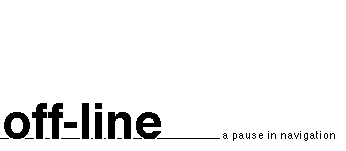Net business jargon is using some peculiar definitions.
Of course they are not mathematical formulas; "2"
stand for "to". B is for business, C is for
customer (or "consumer"). Sometimes they are
written on other ways... so we read btob, btoc, ctoc, ctob...
and we wonder if someone is trying to fix an old clock.
Of course it’s quite easy to understand what they mean.
But it may be useful to look into these standard definitions
to understand what they are really about.
B2B (business-to-business)
The consensus is universal: this is the priority, this is
where the money is. It’s quite true; so far the bulk of
online business is in company-to-company transactions. But
there’s little depth to the analysis. Most
business-to-business transaction don’t need a website. If we
look only at what appears on the web, they are invisible.
Several companies are not particularly interested in telling the word what they are
doing – except for some bland and generic "corporate
publicity". Of course most of this business is
legitimate and legal, but there is no advantage in informing
a wide audience (or the media) of the most relevant and
productive activities – and letting competitors find out too
soon, or too easily, exactly what is being done. So it’s
there, but often the most interesting developments are those
that we can’t see.
B2C (business-to-customer)
"Electronic commerce" is generally understood
mostly as selling goods or services to people ("final
consumers"). This is not, so far, the biggest part of
online business. It’s also often seen as unsuccessful, for
the simple reason that hopes sere set too high, too soon, and
that countless attempts ere poorly planned and managed. In
spite of the delusions and disappointments, it will continue
to grow. But it’s not as easy as too many sellers of
ready-made solutions are claiming. There are no shortcuts.
Selling online doesn’t work unless it’s well integrated with
logistics, buying, etcetera. This can’t be done overnight by
installing a piece of standard software or setting up a web
site. It takes patience, time, consistency and care – a
long-term commitment and a willingness to experiment and
learn. There would be much more success now in this area id
there hadn’t been so many false prophecies, bad starts, hasty
projects, poorly conceived operations, unkempt promises – and
therefore disappointments
C2C (customer-to-customer)
Person-to-person transactions are the oldest form of
e-business. They’ve been there from the beginning, long
before there was any widespread use of the internet. They
continue to be all over the place, quite invisible to anyone
thinking that all business is on a website. They can (in
part) be supported on large and visible websites. As in the
case of the so called "auctions" that have been
growing fast all over the place – but they are only one of
many ways of helping people to deal directly with each other
or to buy more conveniently from companies.
C2B (customer-to-business)
The most important activity in e-commerce isn’t selling.
It’s buying. Quite often that doesn’t mean buying online but
checking, comparing, analyzing quality and price before
baying in traditional stores or services. Customer
empowerment isn’t a legend or a theory, It’s hard fact and it
will grow as more people become more aware of the tools they
have to pick and choose – and negotiate. This could be the
single most important development in the new economy. Maybe
scaring for some companies, but an opportunity for all who
know how to find the right clues. With or without the
internet, in many businesses the concept of marketing (even
of market) will have to change radically. We are only at the
beginning of a development that can have vast and deep
consequences.
The “borders” aren’t clear
Simplistic formulas and standard definitions can often be
misleading. The separation between the this-to-that
territories aren’t as neat and sharp as it may seem
comfortable to believe. When the empowered customer is a
company, is that b-to-b or b-to-c? Etcetera... What’s
important isn’t choosing a definition, but understanding how
it works. An abundance of formulas and attempts to define
patterns hides the fact that most business analysts haven’t
been able to come to grips with the real problems and
opportunities. That’s not surprising, because these are new
and fast-changing environments. In practice, it’s much more
efficient to forget the formulas and learn from experiment.
Trial-and-error is much more effective than any
standard theory. This is bad news for the hasty, the lazy,
the sellers of miracle solutions and the seekers of instant
success. But it’s a great opportunity for genuine
cultivation of the internet.



